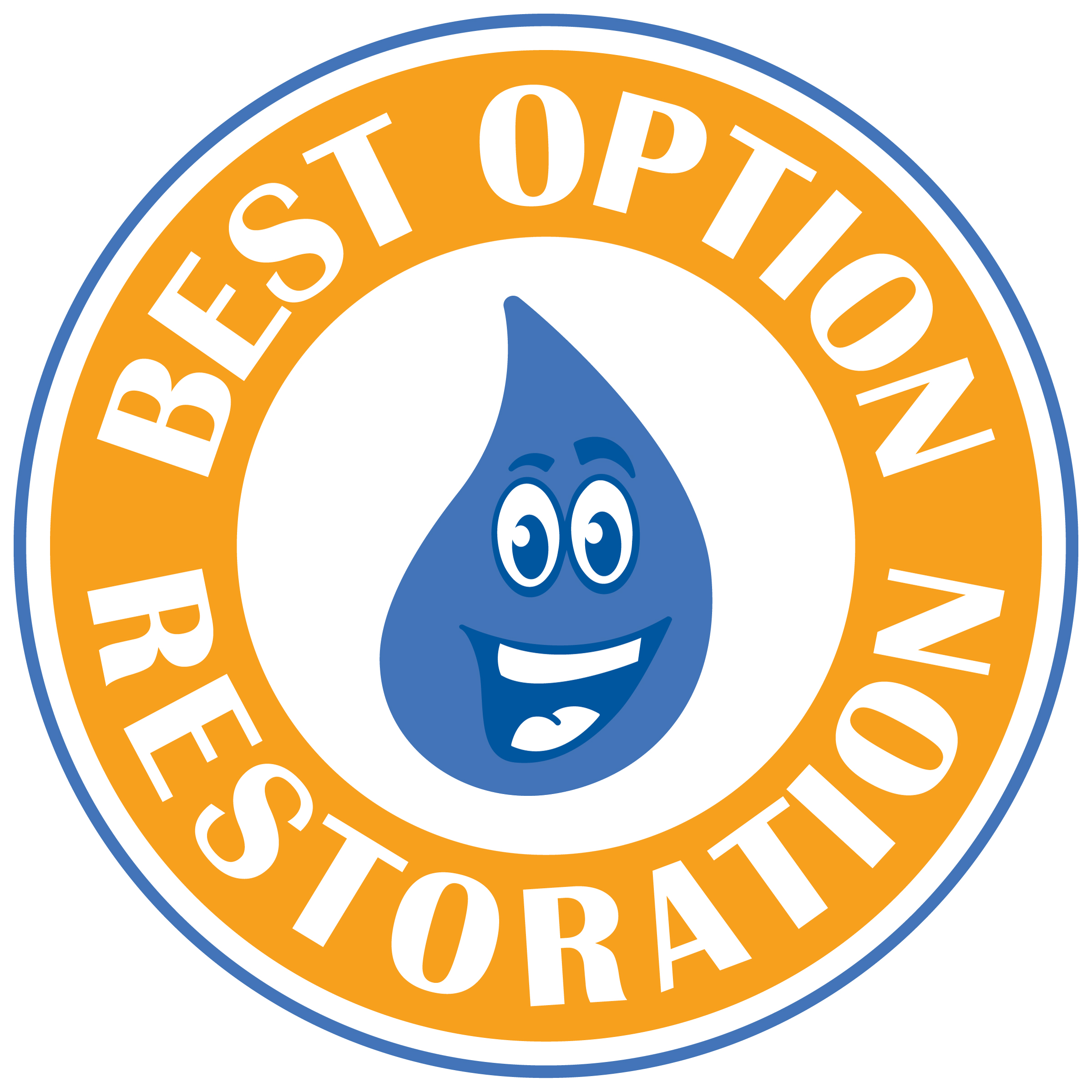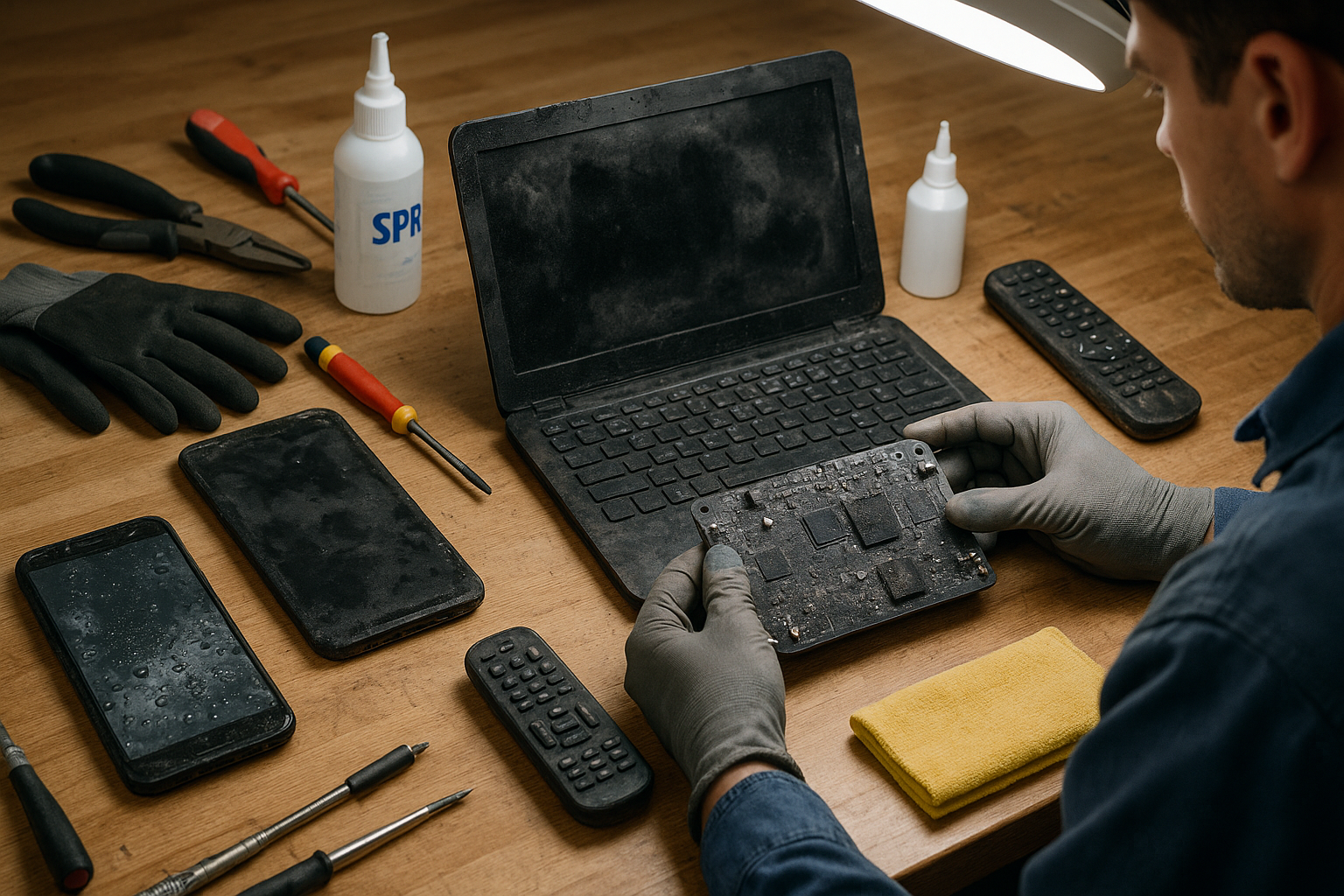After a disaster such as a flood or fire, the aftermath is stressful. One of the first questions people ask is whether any of their electronics can be brought back to life. The fast action taken in those early moments will determine whether your favorite devices, work computers, or even large appliances will work again. This guide breaks down which items stand a chance, how professional electronics restoration works, steps to take immediately after a disaster, and how to make sense of insurance, data recovery, and safe disposal.
Taking Action Right After Disaster Strikes
Once the risk has passed, your immediate response influences your chances of saving electronics. Safety always comes first. Unplug any device you intend to save, even those with battery backups. Doing this quickly lets you prevent shorts and the dangerous transfer of power through water or smoke residue.
Resist the urge to turn on any device that has come in contact with water or soot. Power can drive contaminants deeper into the components. The internal circuitry of modern devices can suffer instant, sometimes irreversible damage if energized while wet or dirty. Taking photographs at this point of everything damaged provides a crucial record for insurance. List each item and include the make, model, and serial number if possible. This will help later when you need to discuss replacement, repair, or reimbursement with your insurance provider.
How to Tell What Can Be Saved
Restoring electronics after a disaster is not always possible. The outcome depends on many factors, such as how long devices were exposed, what kind of contaminant caused the damage, and the device’s build quality. Clean water, like that from a burst pipe, tends to have less long-term effect than saltwater. Smoke and soot from a fire leave residues that corrode metals and insulate components with damaging films. If exposure was brief and the device shows no overt damage to the outside shell, things may look good. However, even minimal moisture inside can start a corrosion process that leads to failure later.
Every component from laptops, smartphones, and televisions to refrigerators and routers has its own tolerance to contaminants. Devices that had covers or cases in place, or that were on higher shelves away from direct water or soot, stand a better chance of restoration. Electronics that were submerged for more than a few minutes, or exposed to fire retardants and chemicals, are unlikely to ever work as before. High-end audio and home theater systems may have valuable internal chips or memory boards that a specialist could salvage, even if the case is ruined.
Professional Electronics Restoration: Key Processes
With electronics, professional restoration offers the best hope for saving valuable technology and data. Using advanced hardware, pros clean internal and external surfaces with processes not available in general repair shops. One leading method is ultrasonic cleaning. High-frequency sound waves agitate deionized water and special solvents, dislodging soot, grime, and corrosion from even the smallest circuit traces and connectors (Epic Electronics Restoration).
After cleaning, controlled temperature and humidity drying removes any moisture the cleaning process left behind. Often, multiple rounds of cleaning and drying may be required. Dehumidifiers and vacuum chambers sometimes play a role, particularly with sensitive or high-value devices. Once drying finishes, restoration experts test each unit for function. They check for power-ups, short circuits, and failed capacitors. In some cases, repairs may include soldering broken traces, replacing burnt-out chips, or even swapping out entire boards.
These techniques differ considerably from basic home methods which may involve rice or hairdryers. These DIY approaches lack effectiveness and often allow corrosion to continue inside unseen, leading to failures down the road. In professional settings, every step is performed using tools designed specifically for electronics restoration and salvage (CRDN Electronic Restoration).
Special Concerns for Water Damage
Flooding poses unique threats to electronics. Even a small amount of water inside a case can mean major issues. Clean water (from a leaky roof or plumbing) gives a slightly better recovery prognosis. However, water from outside, carrying salts, industrial runoff, or biological contaminants, causes rapid mineral buildup and sometimes mold. Fresh water can still short out circuits, encourage rust, and break down delicate solder points. Once caught, these pollutants kickstart corrosion by reacting with various metals. If the internal battery of a device is damaged, it may leak hazardous chemicals, compounding the situation further. In the aftermath of water exposure, professionals may open cases to flush and dry interiors quickly. If done outside of a clean environment, airborne dust and other residues may sneak in. Only a well-equipped service technician should open up expensive or specialty devices for flushing and restoration.
The Effects of Fire and Smoke on Electronics
Fires leave more than burned electronics. The smoke carries acidic compounds and fine carbon particles that seep into every opening in devices. Even if flame does not directly touch an item, smoke can devastate the inside. Corrosive films settle on circuit boards, switches, and contacts, sometimes resulting in immediate failure. Soot is conductive and, if left in place, may cause circuits to bridge where they should not. Clean-up requires careful removal of all traces of smoke residue without grinding particles deeper into surfaces. Some restoration providers employ photography under UV light or special chemical tests to identify hidden contamination. Removing batteries or power sources after a fire is a must before transport to a restoration specialist. Device cases should remain closed so not to spread soot. Homeowners should avoid spraying anything onto electronics to remove the soot as this can mix with contaminants and form sticky, more destructive residues.
Restoring Data and Files After Device Damage
Often, the most valuable part of a damaged electronic device is not the hardware, but the data it holds. From family photos to business databases, data recovery remains a top concern after a disaster. Hard drives, solid-state drives, SD cards, and flash drives each respond differently to water, smoke, and heat. In many cases, the data remains intact even if the device body is a loss. Data recovery professionals use forensic-level equipment inside sterile environments to extract files and transfer them to safe storage. For drives that suffered brief water submersion or smoke exposure, recovery rates are encouraging.
Preventive measures work best. Regular cloud backups or routine offsite hard drive backups provide peace of mind if something ever happens again. After an incident, never attempt to power up a device for the sake of data retrieval. This can destroy the memory by causing internal shorts or static damage. Contact a qualified recovery professional right away. Even smartphones and tablets with built-in storage often can be connected to recovery systems that pull photos and files directly off the chips (CRDN Electronic Restoration Process).
What Homeowners Should Avoid
Some actions done with good intentions can ruin a salvageable device. Never attempt to dry electronics using a microwave, conventional oven, or excessive heat. Extreme temperatures warp circuit boards and melt plastics. Avoid commercial blow dryers or vacuum cleaners which can generate damaging static charges. Rice, a common home remedy, does little more than hide surface moisture. It does not address humidity inside components, or the risk of minerals shorting out circuitry days or weeks later. Jiggling or shaking devices can spread contaminants inside. Patience and leaving devices untouched is best until a trained technician can assess their condition. Do not open sealed components unless you are trained and have proper tools. Opening devices in poor conditions introduces more dust and moisture. Keep everything above ground if the area is flooded for an extended period. Stack electronics on shelves away from damp floors and do not pile them nose to nose, which may trap moisture and restrict airflow.
Insurance Claims for Electronics Restoration
Insurance coverage varies widely. Some policies cover both the labor of restoring devices and the cost of replacing them if work fails. Others may require proof of professional assessment before considering payouts. Having documentation is essential. Keep photos and written inventories organized by room, category, or value. Sometimes a professional restoration company will prepare a detailed report with repair costs, value after restoration, and the probability of long-term function. This can provide leverage in reimbursement or replacement discussions with an adjuster. Maintain receipts from cleaning and restoration. If a device is declared a total loss, ask whether replacement value or fair market value applies, as this changes your reimbursement amount. Electronics that store sensitive business data also may fall under commercial specialized claims, so consult your provider for details specific to your situation. If your area faces frequent flooding or wildfire risk, consider supplemental coverage for electronics damage. This makes the process easier if such an event ever occurs again.
Safe Disposal of Unrecoverable Items
If a device fails restoration or is unsafe due to battery damage or chemical residue, proper disposal is required. Electronics qualify as hazardous waste. Avoid trashing them with standard household debris. Many cities, including Austin and the surrounding region, offer e-waste drop-off centers or community collection events. Remove all batteries before disposal. Some components inside may be recoverable or recyclable, protecting both you and the environment. Homeowners also worry about data on broken or irreparable drives. For these, use a destruction service or physically destroy the drive platters or chips before turning over to a recycler. Local regulations may set fines for improper disposal, so check with city services or your professional restoration provider for current best practices. Failing to dispose correctly releases hazardous chemicals into groundwater and soil, a risk that grows with every flood or fire in the area.
Why Professional Help Makes the Difference
Professional electronics restoration services have equipment, experience, and training to recover devices that would otherwise be sent to a landfill. They offer cleaning, drying, decontamination, and testing procedures that go far beyond what is possible with everyday tools. Specialists can also save time and money by restoring only items likely to function safely for the long term. Detailed diagnostic tools tell if internal circuits are safe or if corrosion will soon cause failure.
Technicians can advise you when replacement makes more sense, as well as what to do with recovered data and irreparable devices. Some companies, such as Best Option Restoration of Travis County, work closely with families and businesses across Austin to provide 24/7 response and support. This includes fast inspection and quotes, help with documentation, and even links to local e-waste resources. Choosing a trusted partner means faster recovery, less stress, and a better outcome for both devices and data.
Increasing Chances of Recovery Next Time
While not every incident is preventable, some routine steps make recovery easier and faster if disaster happens again. Place surge protectors on expensive gear to help limit fire starts. Elevate desktop computers, backup drives, and entertainment equipment on sturdy shelving to keep them above typical flood lines. Keep current backups of all important files on cloud services or external drives stored separately from the house or office. Install smoke detectors in rooms with high-value electronics and test them often. Review your insurance coverage annually to confirm you are protected against both water and fire damages for your most valuable devices. Building a relationship with a local electronics restoration provider ahead of time speeds up the process after an emergency.
Recovering electronics after disaster demands quick thinking, patience, and knowledge of the proper techniques. Taking immediate action to unplug and avoid powering on devices, followed by a call to professionals, gives you the best chance at salvaging your equipment and important data. Every disaster is different, but with careful attention to process and the help of trained restoration teams, today’s technology stands a good chance of returning to service.


